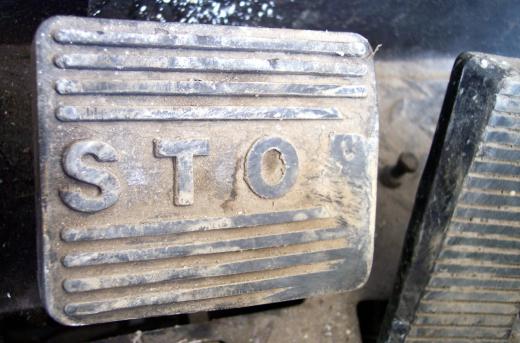Banjo bolts are hollow bolts used with fluid systems to control the flow through fluid delivery lines and other components. Superficially, some designs resemble banjos, explaining the name. They are also known as internally relieved bolts. Manufacturers of bolts and other components for liquid systems, particularly hydraulics, typically offer a range of banjo bolts in their product lineup. It is also possible to fabricate them for custom projects, if technicians have access to metalworking equipment.
The hollow interior of the banjo bolt allows fluid to flow inside, and exit through a small hole at the side. The bolt can lock into a system to control fluid performance and pressure; a common use for banjo bolts is in brake systems, for example. The bolt connects the brake lines to the cylinder to control pressure in response to activation of the break pedal. Hydraulic systems transform relatively light pressure into more power, allowing the brakes to do most of the work to stop the car, rather than the driver.

This design confers a number of advantages. Banjo bolts can make a very tight seal, and are often fitted with washers to prevent leaks. As long as a technician installs a bolt properly, it should hold without leaks and other issues. Over time, the washer may eventually fail, requiring replacement to prevent system leaks. Corrosion can also contribute to breakdown of a banjo bolt earlier than expected, making it important to keep systems clean and free of road salt and other potential corrosives.
These bolts can also handle very high pressure, which is important for many fluid systems. In hydraulics, for example, the fluid is held under pressure and this is what allows the system to function. Loss of pressure makes hydraulic systems much weaker, as can be seen when brake lines have a leak and a driver is no longer able to stop a car with the brake pedal. The pressure resistance can vary, depending on the design, and a bolt usually carries a rating with information about recommended pressure limits.
Drivers can replace banjo bolts as well as the entire fitting which houses the bolt as components wear out or they retrofit systems in a vehicle. Replacement parts are readily available. It is important to get a bolt of the correct size and configuration to avoid problems with a vehicle. Parts books usually provide detailed information, and for drivers installing aftermarket systems or parts, it is advisable to read the documentation carefully to select the right banjo fitting.
Ever since she began contributing to the site several years ago, Mary has embraced the exciting challenge of being a About Mechanics researcher and writer. Mary has a liberal arts degree from Goddard College and spends her free time reading, cooking, and exploring the great outdoors.

